Rock art in Ravenna, Italy
In August, on our way back north from Gubbio, we stopped at Ravenna, a small city famous for its 5–6th century Byzantine mosaics. Ravenna is just 2 hours south of Venice and is well worth a 2–3 day visit. The purpose of this post is two-fold. (1) To introduce readers to a place with incredible interior art work mostly made with small to large pieces of rock. (2) To explain the origin and importance of Imperial (purple) porphyry.
In the earliest 5th century, as the Western Roman Empire was weakening, Emperor Honorius transferred the capital from Rome to Ravenna, where it remained until Ravenna was conquered by the Ostrogoths and their king Theodoric in the late 5th century. In the 6th century, the Eastern Roman Empire expelled the Goths and came to power under the Byzantine Emperor Justinian. During these periods, rulers expended vast resources to build and decorate the interiors of their churches and monuments. Eight locations in Ravenna, all with magnificent early Christian art, have been designated as UNESCO World Heritage Sites.
The mosaic art

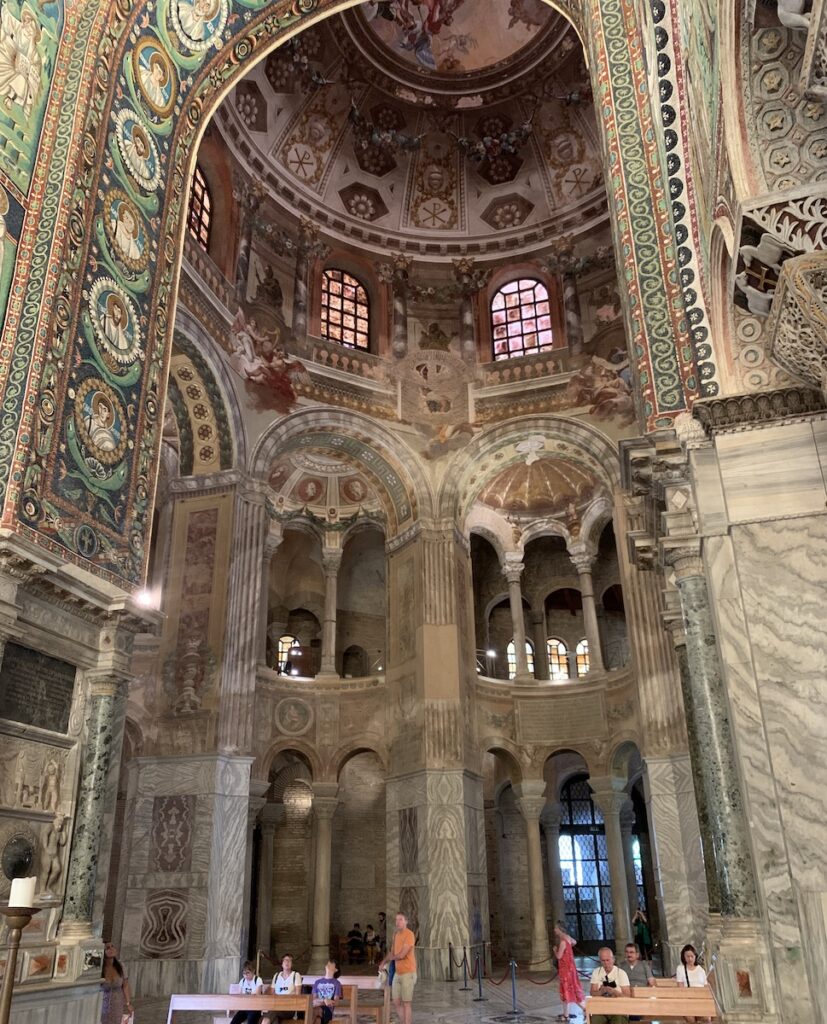
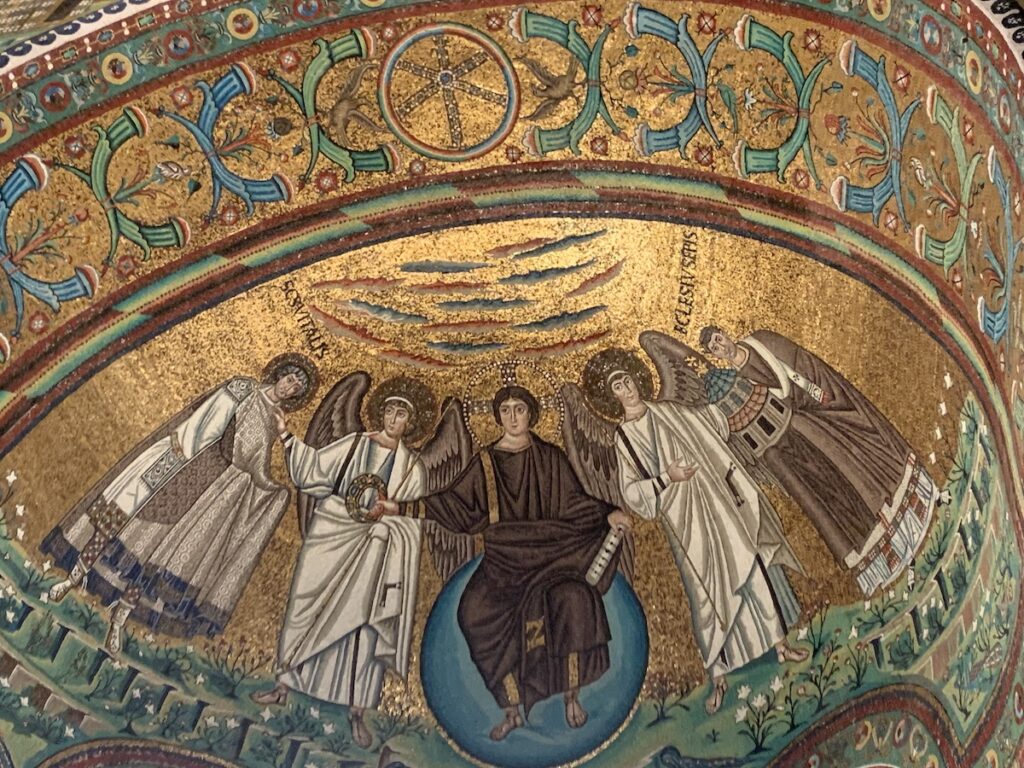

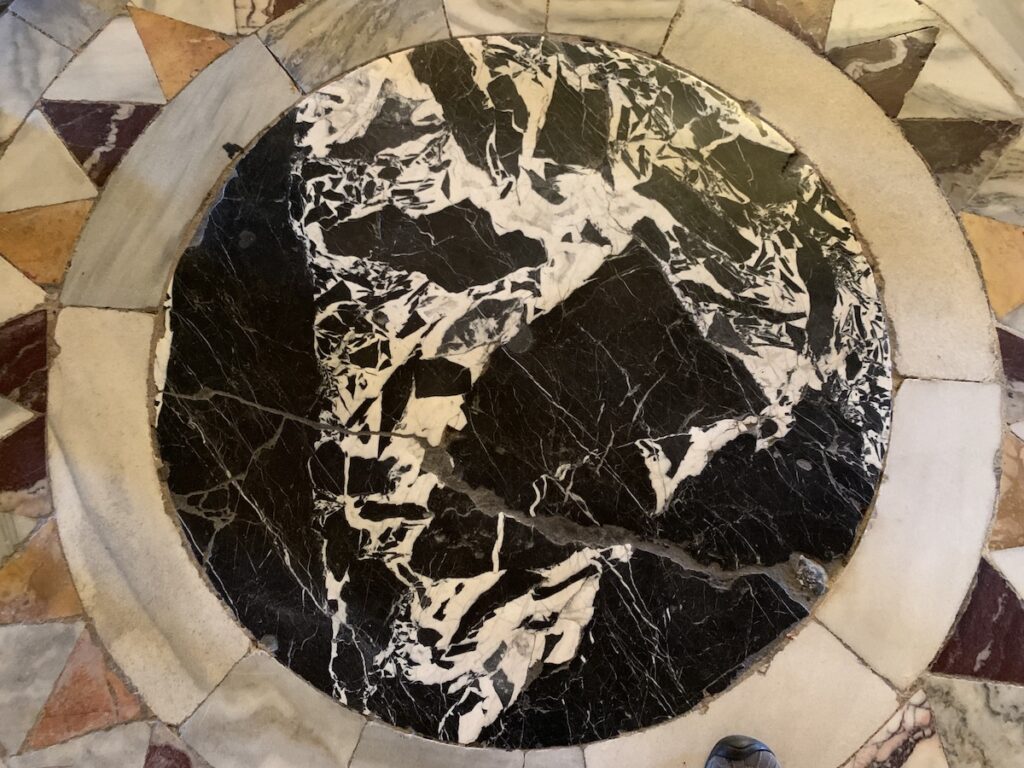
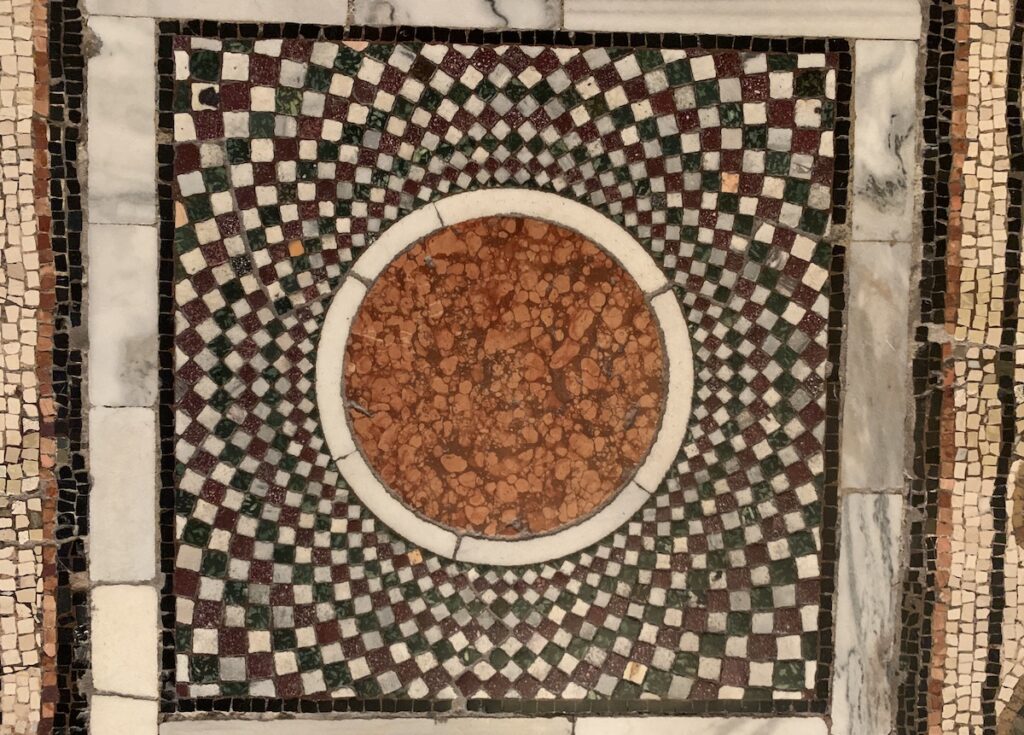
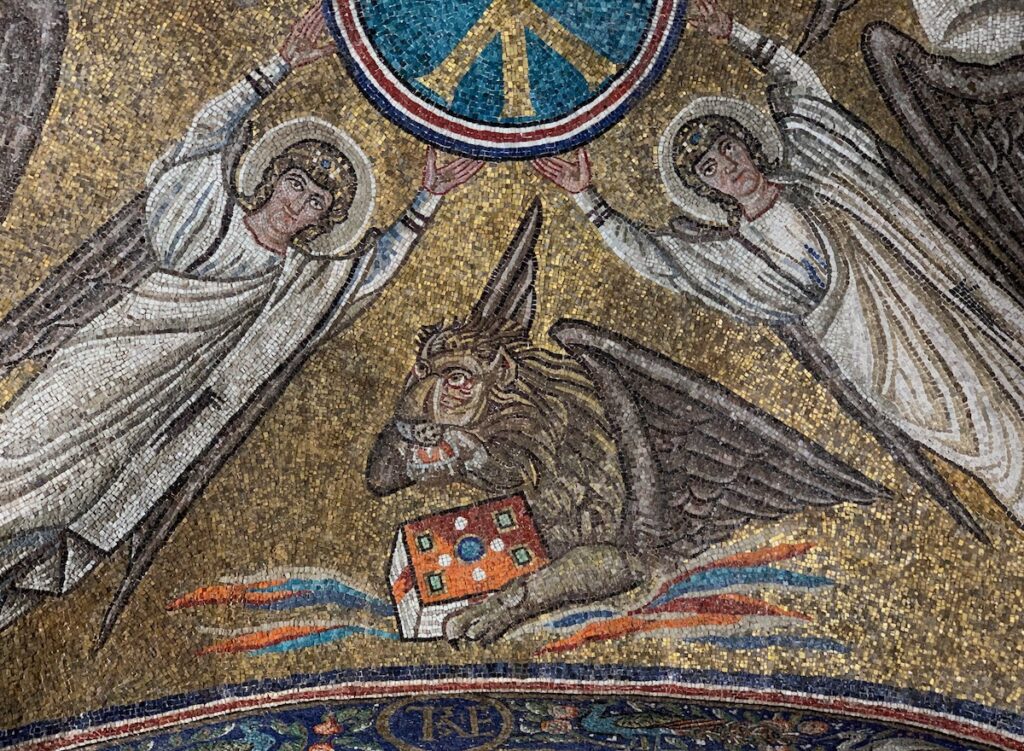
Imperial Porphyry
Purple porphyry is found in some of the art work in Ravenna. It was a hallmark of royalty and power during the Roman Empire and remains a highly valuable rock today.
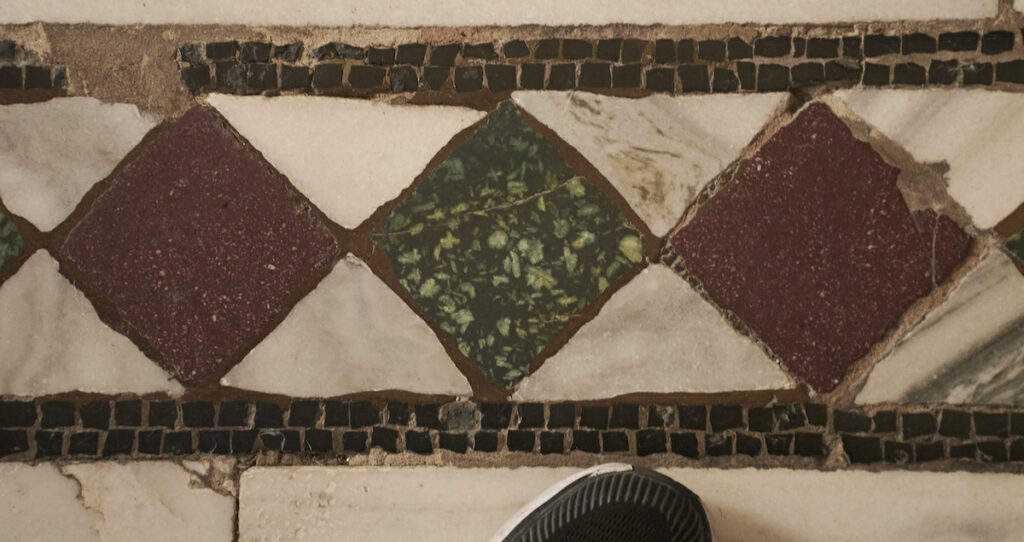
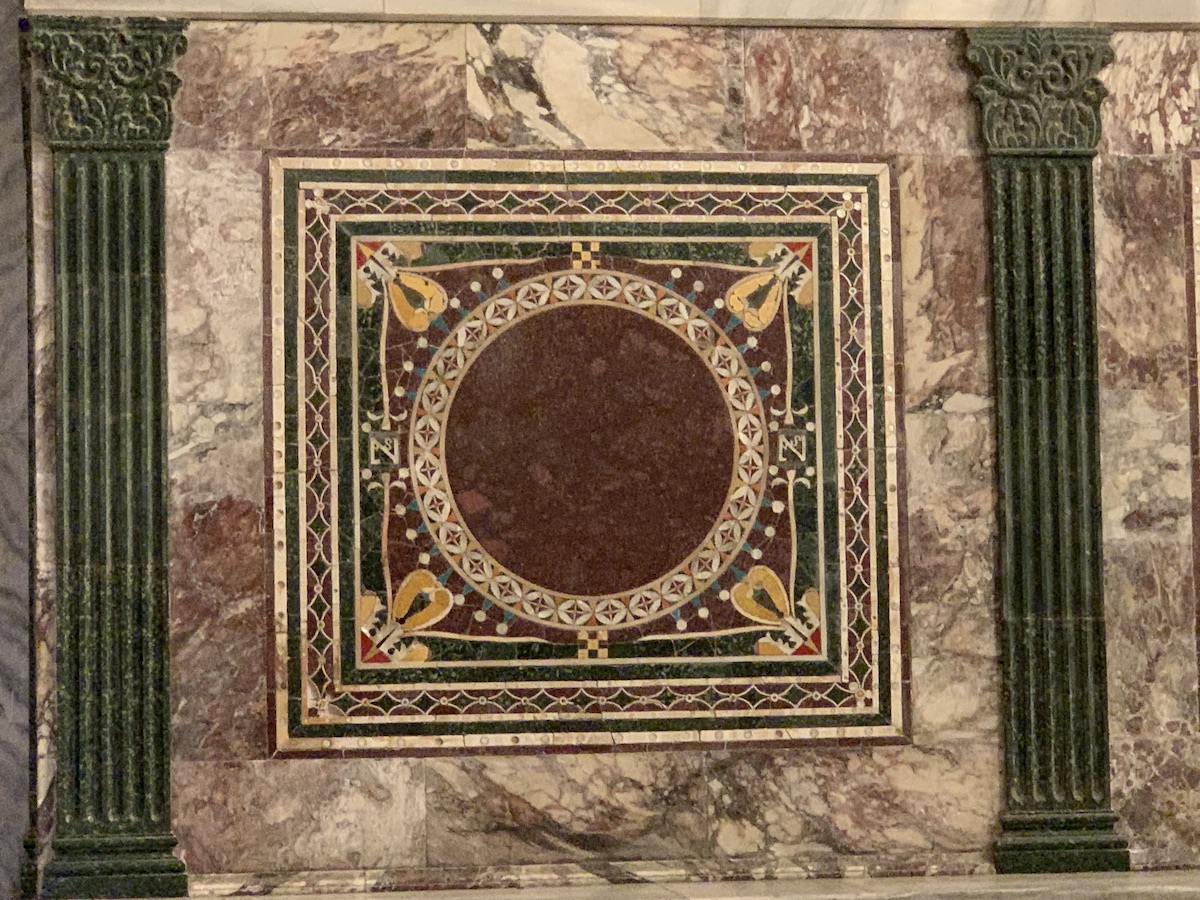
The name “porphyry” is derived from the location where this rock type was found. In 18 AD, a Roman Legionnaire discovered a beautiful purple rock in Mons Porphyrites (Porphyry Mountain), a remote part of the eastern desert of Egypt. It has a deep purple background color with larger white crystals. This porphyry quickly became the most prestigious stone of Rome and Byzantium. It was reserved exclusively for the Imperial court of the Roman Empire—hence the name “Imperial Porphyry”. Contributing to its value is porphyry’s durability and hardness, properties that require a highly-skilled artisan. If you do an internet search for “Imperial Porphyry”, you will find some spectacular examples of busts, vases, containers and other art works from that period. You will also find that this rock continues to bring extravagant prices.
Despite the inaccessible, harsh location in the Egyptian desert, the Romans quarried this treasured stone until the late 5th century, when the quarry was abandoned. It was rediscovered in the 1800s, but remains a place that is very hard to get to, and very hard to quarry.

The porphyritic rock found in Mons Porphyrites is just one example of what is now a whole geologic category of rocks called porphyries. They are typically silica-rich volcanic rocks that were erupted explosively from stratovolcanoes. Although Italy was not the source of Imperial Porphyry, it is well known today for its variety of other porphyritic volcanic rocks. Many are mined to sell as decorative paving stones or other uses that require an attractive, durable material. Here’s an example of a high-quality porphyry product from the province of Trentino: http://www.porfidotrentino.com/en/porphyry/.
Your assignment!
I could have posted many images from the UNESCO World Heritage sites in Ravenna. But they are better seen in person, so put Ravenna on your northeastern Italy “must see” list. And keep a lookout for purple (imperial) porphyry. I’ve seen it in museums in the United States, and scattered about in many parts of Europe. Because it was so valuable, it got stolen, recycled, and otherwise redistributed since it was quarried in the 1st-5th centuries. The best place to see it is in Rome, particularly in the Vatican. Of course, you should look for regular porphyry too. It is abundant on continents and when you see it, you will know that volcanoes erupted there!


Very very interesting! The artwork in the basilica of Saint Vitale is stunning. The rock art is amazing as well. Thanks for sharing.
Thanks Jolene! I’ll have to show you more photos of the artwork.
Are your trips open to folks?
Kathleen Myers
Hi Kathleen, Because I am not a tour company, I don’t have the ability to arrange logistics for groups. My goal is to share geologic information about places I visit with others who are interested in these locations. Thanks for your interest!